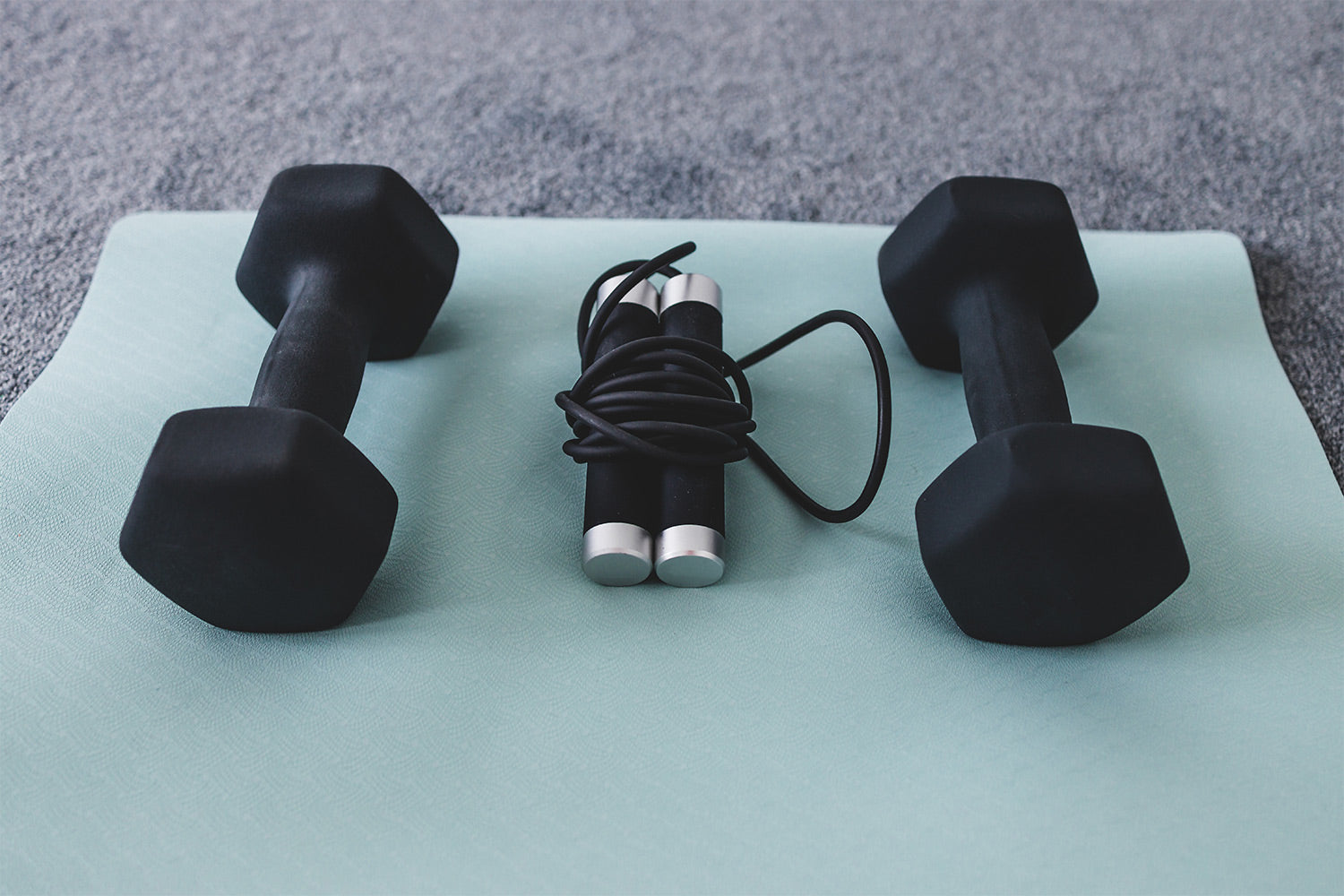Building your workout routine is an important part of reaching your fitness goals. While there are hundreds of workouts to choose from, they can roughly be grouped into two categories: cardio and weight training.
While cardio and weight training both serve different purposes, they both have many health benefits. A cardio workout is great for your heart health; it can reduce high blood pressure and can help build your endurance. Weight training can help with fat loss and increasing gains.
Although it’s important to include both in your workout routine, each has its benefits. Find out how cardio and weight training stack up against each other in this guide from EnergyFit.
What Is Cardio?
While any type of exercise is amazing for your health, we’re referring to something specific when we say cardio. Basically, cardio—short for cardiovascular—is a physical activity that increases your heart rate and breathing rate while using large muscle groups repeatedly.
Some examples of cardio training include running, sprints, walking, going on a bike ride, cycling, or a brisk jog.
This type of exercise improves your body’s ability to deliver oxygen to other parts of the body, which is important for a healthy heart. You know you’re doing cardio when your heart rate is between 70 to 80 percent of your maximum heart rate.
Roughly, there are two types of cardio: high-impact cardio and low-impact cardio. The former requires you to have both feet off the ground during the exercise, which causes a greater impact on your joints and feet. On the bright side, this type of cardio can seriously challenge you and lead to many improvements in your health. Running is one example of high-impact cardio we all know and love.
You may think that low-impact cardio is not as intense. While it is more gentle on your joints and feet, it’s still great for conditioning your heart and lungs. Power-walking and hiking are examples of low-impact cardio that have some serious benefits.
Whichever type of cardio you choose to do, it’s important to stay consistent. In general, it’s recommended to do 150 minutes of moderate-intensity cardio or 75 minutes of high-intensity cardio per week (although doing more won’t hurt!).
What Is Weight Training?
Weight training is a common type of strength training for developing the strength and size of skeletal muscles. Typically, you’ll use dumbbells, barbells, or resistance machines to put “weight” on your muscles while contracting them. Through the process of hypertrophy, your muscles get bigger and stronger over time, thanks to weight training.
There are plenty of benefits to weight training that don’t include getting bigger muscles (although that’s definitely important!). Weight training can also improve your posture, raise your metabolism, and give you something to look forward to when you hit the gym. For the best results, it’s important to weight train each muscle group at least once per week.
Cardio vs. Weights: Which Is Better?
Cardio and weight training each have their pros and cons. Here is how they stack up in these five major categories:
1. Burning Calories
When it comes to the number of calories burned during the actual workout, cardio comes out on top. High-intensity exercise such as rowing can burn up to 600 calories per hour (based on someone who weighs 150 pounds). Weight lifting, on the other hand, can burn up to 300 calories per hour—and that’s if the weight lifting is incredibly vigorous. So, calorie-for-calorie cardio will give you more bang for your buck.
But the amount of calories that you burn during your actual workout is only one part of the equation. There’s also the afterburn effect—A.K.A. excess post-exercise oxygen consumption—which is how many calories your body burns while it recovers.
The afterburn effect is pretty minimal for cardio, lasting—at most—a few hours. But with weight training, the afterburn effect can last up to 48 hours! For this reason, we definitely wouldn’t skip out on lifting weights just because it seems like it burns fewer calories.
All in all, you can achieve a calorie burn with cardio and weight training which can help you get rid of excess body fat.
2. Building Muscle
Lifting weights is the ideal way to build muscle. By challenging your muscles with more repetitions and heavier weights, you’re creating micro-tears in your muscle fibers. When your body repairs them, it makes your muscles bigger and stronger than they were before—a process known as hypertrophy.
The best part about weight training is that you can choose which muscles you want to grow and which ones you want to keep as is, which will allow you to build your ideal physique. When you target specific muscle groups, you can focus on more controlled reps on a given day instead of throwing together a bunch of movements.
That said, weight training isn’t the only way to build muscle. This might be surprising to hear, but some forms of cardio are excellent for growing bigger muscles. If you’re doing high-intensity cardio such as running, then you can expect to see muscle growth in the areas you’re using most, such as the legs. For this reason, we’ll definitely keep cardio around as a way to keep our muscles strong.
3. Short-Term Weight Loss
Sustainable weight loss takes a bit of time. This is because losing more than one or two pounds per week can lead you to lose muscle (which is best avoided) or water weight (which is not sustainable). However, sometimes you need to drop a few pounds quickly for a special occasion, in which case it might help to increase how many pounds you lose per week.
Cardio is generally the best way to slim down quickly. That’s because cardio tends to be the better way to sweat, decreasing water weight and making you look slimmer. On the other hand, weight training might actually make you put on a bit of water weight a day or two after working out. That’s because your body directs extra lymphatic fluid to your muscles for recovery, which can lead to a (slightly) swollen appearance right after.
4. Long-Term Weight Loss
While ratcheting up the cardio seems like the most common-sense way to lose weight, it’s not exactly ideal. That’s because for long-term weight loss, you want to lose fat while building lean muscle mass. If you do just cardio and lose weight without replacing muscle, your metabolism might not work as efficiently. For this reason, both cardio and weights are necessary components of long-term weight loss.
5. Building Your Ideal Physique
How you build your ideal physique really depends on what your ideal physique is in the first place. You may want big, well-defined muscles or prefer a slim appearance. Regardless of which type of physique you desire, it’s a good idea to build some muscle. (We promise it won’t make you look bulky!) For this reason, it’s a good idea to incorporate both cardio and weight training into your workout routine.
HIIT: The Best of Both Worlds
The general recommendation is to get at least 150 minutes of moderate-intensity or 75 minutes of high-intensity cardio per week. In addition, it’s a good idea to lift weights about three times per week so that you’re able to hit all the main muscle groups. If you do the math, it might seem like much more time than you’d like to spend in the gym.
Thankfully, there’s a faster way to reach your fitness goals. With high-intensity interval training, you can combine the benefits of cardio with those of weight training. By doing strength-building exercises such as squats, rows, and lunges in fast succession, you can challenge your cardiovascular system, sweat enough to detox your body and build some serious muscle. Plus, HIIT exercise has an afterburn effect of up to 24 hours.
A Little Bit of Everything
While the idea of choosing to do either cardio or weight training is convenient, both forms of exercise have their benefits. For a well-rounded workout routine, it’s best to include weekly cardio and weight training sessions.
Both cardiovascular exercise and weight training can improve your mood by increasing the endorphins your body produces. We all love those feel-good chemicals!
Overall, HIIT workouts and resistance training with EnergyFit can be a great way to get all the cardio and weight training benefits—in record time.
Sources:
The Vox Guide to Getting Huge | Vox
Feeling Bloated and Sluggish? Your Lymphatic System Could Be the Culprit | Vogue
Skeletal Muscle Hypertrophy after Aerobic Exercise Training | NCBI





Leave a comment
All comments are moderated before being published.
This site is protected by hCaptcha and the hCaptcha Privacy Policy and Terms of Service apply.